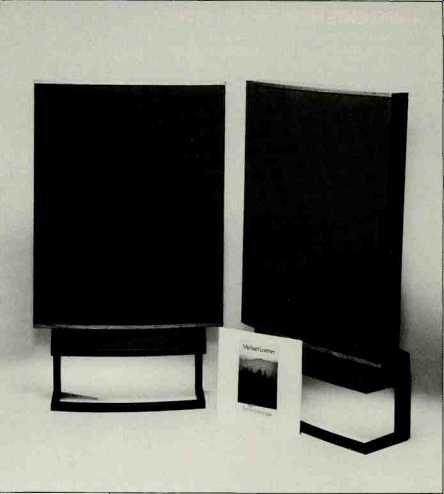
Manufacturer's Specifications:
System Type: Full-range electrostatic.
Nominal Impedance: 8 ohms.
Sensitivity: 86 dB SPL for 2.83 V rms at 1 meter.
Maximum Input: 40 V, peak.
Frequency Response: 35 Hz to 20 kHz, ±6 dB.
A.C. Supply: 240-200/120-100 V, 50 60 Hz, 5 VA.
Dimensions: 36 3/8 in. H x 26 in. W x 10 5/8 in. D (92.5 cm x 66 cm x 27 cm).
Weight: 41.1 lbs. (18.7 kg).
Price: $2,450 per pair.
Company Address: 695 Oak Grove Ave., Menlo Park, Cal. 94025.
Quad is a name long-known and highly respected in high fidelity sound reproduction. Not one to rush into production with a new widget simply because everyone else makes one, Peter Walker has quietly maintained a product line of superb quality and essentially unchanging design. In a business where "breakthrough" designs are more like a fashion fad, having a half-life measured in months, it is refreshing to see that true and unchanging quality persists.
The Quad Electrostatic Loudspeaker 63 is a newer product of Peter Walker's persistent search for quality; rumor has it that the 63 stands for the year when the design was begun. The ESL 63 is a full-range, electrostatic loudspeaker doublet, that is, the diaphragm radiates sound freely to the rear as well as to the front. Full-range electrostatic loud speakers need a large surface area to radiate any appreciable sound output at the lower frequencies. This normally causes dispersion difficulties at the higher frequencies, where a large diaphragm can be many wavelengths in extent. Peter seems to have very effectively solved this problem with the inventive use of wave-controlling patterns on the conductive surfaces which determine the active radiation from the diaphragm. This remarkable feat is dismissed in company literature with typically British under statement: "Signal is fed to the electrodes via sequential delay lines, and the motion of the diaphragm produces a sound pressure pattern which is an exact replica of that from an ideal source placed some 30 cms behind the plane of the diaphragm." Since it is an electrostatic transducer, the ESL 63 must be powered from the a.c. line. Here I must insert a word of warning: Internal protection circuitry prevents the ESL 63 from being damaged by excessive power-amplifier signal well and good, but the 63s protect themselves by short circuiting the speaker line. If the ESL 63 is energized from the a.c. line, this short-circuit protection comes into action only at high power-amp levels. But if the a.c. is switched off, the ESL 63 protects itself at low signal levels. This means that unless your amplifier is protected against dead short circuits, you could damage it by attempting to listen to music when one or both Quads are unplugged from the a.c. line or are turned off. This is, in my opinion, a booby trap for the unwary user. The speaker is protected, but you might blow your amplifier. Of course, you might never do such a thing, but perhaps a babysitter or child might turn the system on when you are not there. I recommend leaving the ESL 63s on at all times (the drain is small) and, if you have any doubts about your amplifier's vulnerability, placing a 3 A, slow-blow fuse in the speaker line.
Standing 93 cm high, with a 15-cm base, the ESL 63 should be placed on a reasonably firm surface; a toddler could readily pull them over if the speakers were placed on a soft or yielding surface. The rear terminals are well marked, and no problems should be encountered in connecting the speaker to a good amplifier.
Measurements
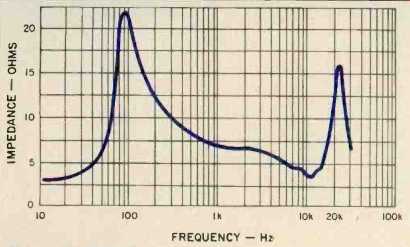
Fig. 1-Impedance.
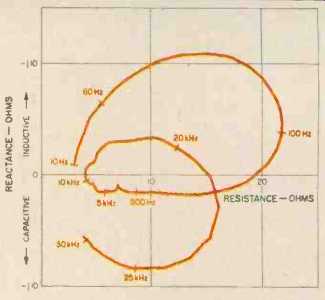
Fig. 2 Complex impedance.
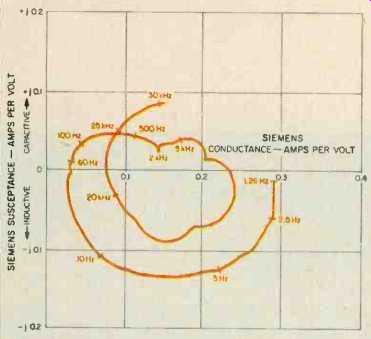
Fig. 3-Complex admittance for 2 V rms drive.
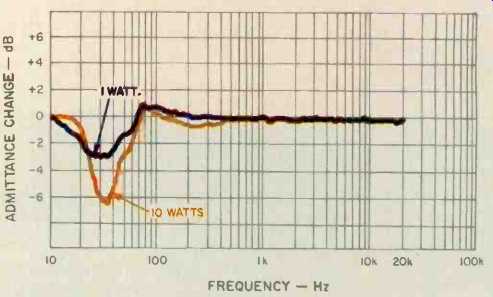
Fig. 4-Change of admittance, at 1 watt and 10 watts, relative to admittance
at 0.1 watt.
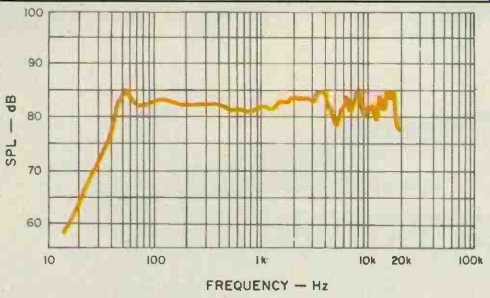
Fig. 5--One-meter on-axis sound output level with a constant drive level
of 2 V rms.
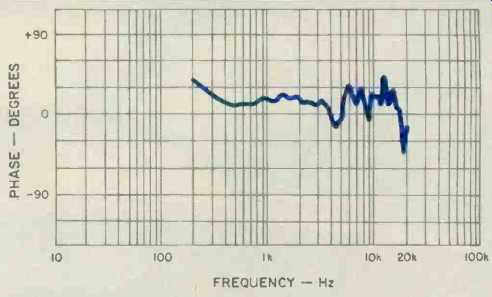
Fig. 6--One-meter on-axis phase response.
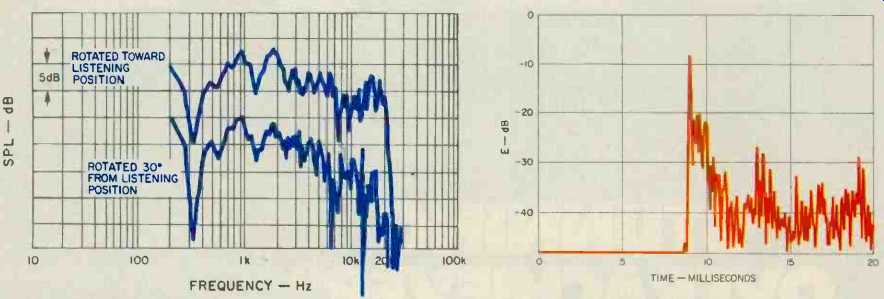
Fig. 7--Three-meter room response. Fig. 8--Energy-time curve for 3-meter room
response.
Compared to a conventional moving-coil loudspeaker, the ESL 63 presents an unusual load to the power amplifier. The measured magnitude (modulus) of impedance is plotted in Fig. 1. Although rated as an 8-ohm system, the ESL 63's impedance remains well below that value over most of the audio frequency range. This measured curve agrees well with that supplied by Quad in the user manual; however, the curve supplied with the system stops at 20 kHz, indicating, by inference, a continuing rise of impedance with frequency. The measurement in Fig. 1 shows that this rise is due to a resonance at 22 kHz, and that the impedance falls rapidly at higher frequencies.
This is more clearly seen in the complex impedance plot, Fig. 2. The higher frequency resonance is now seen to be of such a nature that the impedance above 25 kHz is a potentially more difficult load to drive than that for any frequency lying below 20 kHz. At 30 kHz, for example, the ESL 63 presents a 6-ohm value at a capacitive angle of 60°. It is also clear from this plot that the impedance will continue to fall with increasing frequency above 30 kHz. Care should be taken that the power amplifier used to drive the ESL 63 is capable of driving such a load at very high frequencies.
Although properly traced LP records may not have ultrasonic components, and CD players most certainly will not, a slightly mistracking cartridge could generate distortion in this range, which a distorting amplifier could cross-modulate down to the audible range. The ESL 63 might then be improperly blamed for bad sound caused by certain combi nations of cartridges and amplifiers.
The complex admittance curve, plotted in Fig. 3, also shows this high-frequency effect. The admittance curve is a measure of the amperes drawn per volt of amplifier drive.
Because the actual impedance is closer to 4 ohms rather than 8 ohms, I recommend that the 63s be considered 4-ohm (or 0.25-siemens) systems. Accordingly, the data of Fig. 3 are taken at an actual drive level of 2 V rms (corresponding to 1 average watt into 0.25 siemens). Measurement extends from 1.26 Hz to 32 kHz. As the admittance curve of Fig. 3 travels away and upward from the origin, the loud speaker becomes harder for a conventional constant-voltage power amplifier to drive.
The admittance of the ESL 63 changes with drive level. Figure 4 is a plot of this change. Relative to a drive level of 100 mW, the 1-watt admittance decreases by 3 dB at 30 Hz, then rises by 0.5 dB at 80 Hz. The 10-watt admittance drops by 6 dB (a full half) at 35 Hz, increases by 0.5 dB at 80 Hz, and then drops by 0.75 dB at 250 Hz. This means that the ESL 63 is an easier bass load to drive at higher power, but also that it is somewhat nonlinear.
Anechoic frequency-response measurements were per formed at an actual distance of 1.5 meters and corrected for an equivalent reference distance of 1 meter. Figure 5 is the measured amplitude response, and Fig. 6 is the measured phase response, both for an axial microphone position.
These measurements are for a constant voltage level of 2 V rms, since I am treating the system as a 4-ohm load. These measurements have been corrected for air-path time delay, so that a perfect phase response would correspond to the 0° axis in Fig. 6. The ESL 63 comes the closest to this perfection of any speaker system which I have tested in nearly 20 years of such measurement. A positive-going voltage applied to the " + " terminal produces a positive-going pressure at the listening position. Both the amplitude and phase response are exceptionally good throughout the audio frequency range. The ripples above 4 kHz are caused by internal grille reflections, which are down about 15 dB from the direct sound. Usable response extends from 30 Hz to 20 kHz.

Fig. 9--Expanded energy-time curve for 3-meter room response.
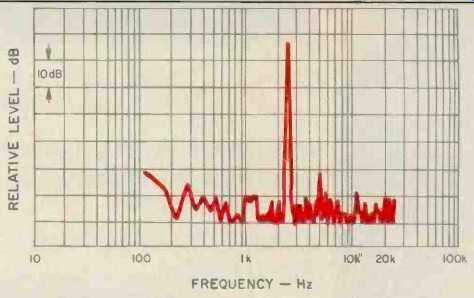
Fig. 10--FFT for steady state tone at 3 meters.
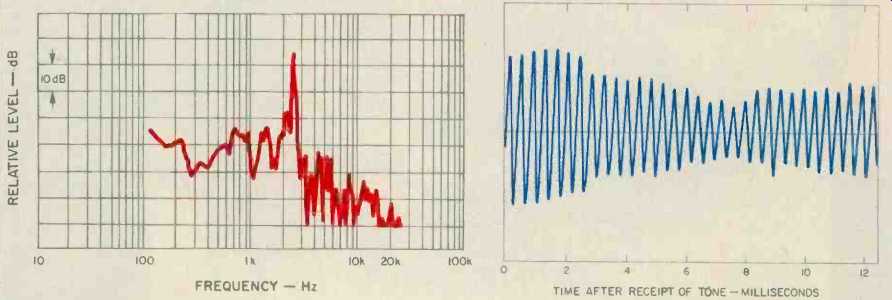
Fig. 11--FFT for transient tone at 3 meters.
Fig.
12--Time signal for FFT of Fig. 11.
The 3-meter room response is shown in Fig. 7. This measurement was made in the same position, and with the actual power amplifier and speaker cable configuration, that I used for the listening tests. The microphone was placed where I sat, 3 meters from the loudspeaker and 1 meter above a carpeted floor. My only concession to measurement was to remove the listening chair and, of course, myself, from the microphone position. The speaker was 1 meter in front of a draped wall, and rotated so that back radiation did not reflect toward the listening position; as recommended by Quad, the ESL 63 was placed on the carpeted floor. Two measurements are shown in Fig. 7; both correspond to the frequency response of the first 13 mS of sound to arrive at the listening position. The upper curve shows response when the ESL 63 is rotated toward the listening position, and the lower curve shows response when the speaker is rotated to direct its sound 30° off-axis from the listening position. (During the earlier listening tests, I had the speakers directed toward me.) The curves are displaced by 10 dB on this plot for clarity of presentation.
I have devoted this substantial discussion to the room test for the simple reason that previously, during the listening tests, I had heard an unusual distortion which I was not able to measure during subsequent laboratory tests. What I heard was a "fuzz" on upper-register transients, in the 1 to 5-kHz range. Thinking it might be distortion in the program material, which the clarity of the ESL 63 was revealing, I borrowed a high-quality CD player and made comparative listening tests using identical program passages from direct disc and CD-and I still heard the fuzz.
The sound was similar to certain types of harmonic distortion, yet the ESL 63 proved to have exceedingly low levels of such distortion in the laboratory tests. The 3-meter room test provided a clue. I regularly perform many more measurements than are submitted for these reviews. One such measurement is the full energy-time curve (ETC) of the 3-meter listening condition. Figure 8 is the ETC corresponding to the upper curve in Fig. 7, reflecting the condition I used when listening, and here was the clue: The first 3 mS of sound had a most unusual arrival pattern. This caused the irregular response in the frequency spectrum of early sound, which is evident in the 3-meter room measurement of Fig. 7. Figure 9 is an expanded ETC, showing the first 4 mS of sound.
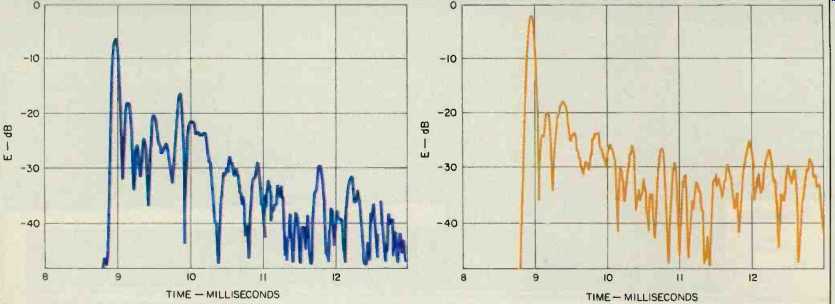
Fig. 13--Expanded energy-time curve for 3-meter room response, speaker on
floor.
Fig. 14--Expanded energy-time curve for 3-meter room response, speaker raised 60 cm.
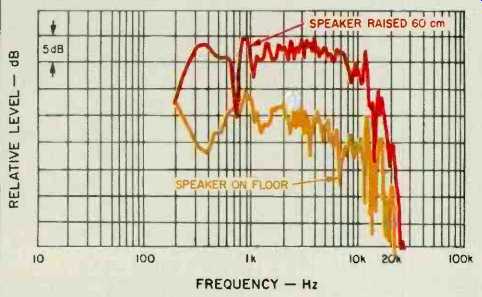
Fig. 15--Three-meter off-axis frequency response for speaker raised 60 cm
(upper trace) and on floor (lower trace).
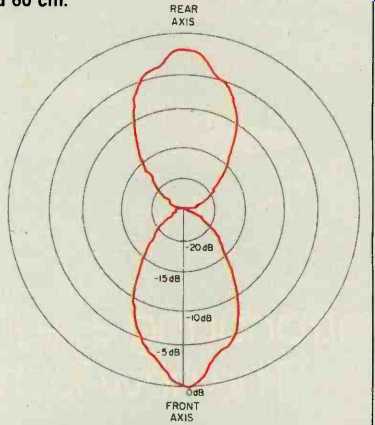
Fig. 16--Horizontal polar-energy response.
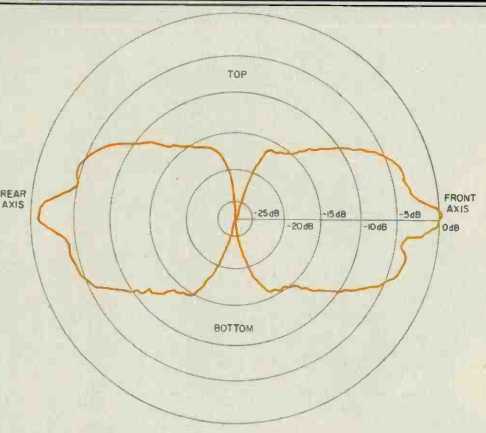
Fig. 17--Vertical polar-energy response.
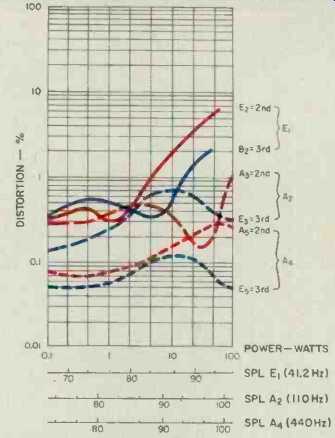
Fig. 18--Harmonic distortion for the tones E1 (41.2 Hz), A2 (110 Hz), and
A4 (440 Hz).

Fig. 19--IM distortion on 440 Hz produced by 41.2 Hz (E1) when mixed in
one-to-one proportion.
Fig. 20--Energy-time curve taken at 1 meter with grille in place.
But where is the distortion I heard? It seems, from both the frequency response and the time response, that the first 3 to 10 mS may be where the problem lies. I heard the distortion on sibilants in female vocals and in tones which were characterized by rapid attack followed by sustain. I found (or believe that I found) the distortion by measuring transient tones in the actual listening location. But I had to create new software and a new test in order to do it.
Figure 10 is an FFT measurement of 16 mS of sound due to a sine-wave signal at 2.65 kHz. This is an actual micro phone measurement for the sustain tone at 93 dB SPL at the 3-meter listening position, and it was captured 250 mS after the tone was applied, corresponding to steady state. It is nearly perfect, with less than 0.5% second-harmonic distortion. This is the frequency having the largest measured harmonic distortion at a level of 93 dB at the listening location and in the 1 to 10-kHz range; quite low, even at its worst. By comparison, a tone of 1 kHz has less than 0.15% distortion at this same level. What I heard is clearly not steady-state harmonic distortion.
Now look at Fig. 11. This is the same 16-mS window, with the same Hanning-weighted FFT, but now measured immediately after the first sound arrived at the listening location. Suddenly, there is fuzz. The otherwise pure tone is accompanied by a nonsymmetrical distribution of sound extending from 100 Hz to beyond 15 kHz. Figure 12, which is the time signal whose FFT is given in Fig. 11, reveals why this occurs. The oscilloscope display shows that the early reflections interfered with the direct sound. The result of this ensemble of sounds is a combination of amplitude modulation and phase modulation of the 2.65 kHz "carrier." We no longer have one source; we have an ensemble of sources for the early sound.
But what is there about the ESL 63 which made this effect so prominent in my listening situation? Comparison of the room ETC (Fig. 9) with the anechoic ETC (Fig. 20) shows the existence of early scatter from the floor. The ESL 63 is too close to the floor. In order to verify this hypothesis, and to exonerate rearward-radiated sound from this dipole source, measurements were performed in a worst-case condition with the speaker's sound axis offset 30° in the listening room. Figure 13 is the ETC for the floor-mounted configuration. Figure 14 is the same measurement with the speaker is raised 60 cm above the floor on a flat stool. Figure 15 shows the 3-meter, off-axis response when the speaker is raised 60 cm (upper curve) and when it is placed on the floor (lower curve). The early sound is much smoother in the raised position. And, yes, much of the fuzz (but not all of it) went away when listening to the raised ESL 63s.
Final note: The ESL 63s are very sensitive to the room and where you place them in that room. They should never be placed directly on a hard floor; I recommend elevating them, if possible. However, these speakers are heavy and can be tipped over by a vigorous toddler, so use caution in placing them at higher elevations if children or pets are going to be around.
Figures 16 and 17, the horizontal and vertical polar energy patterns, are relevant to the preceding discussion on placing the ESL 63s for best sound. These are measurements of the integral of the square of the linear amplitude frequency response for all frequencies from 20 Hz to 20 kHz. These show that the 63 is a dipole radiator; almost as much sound energy comes out of the back as comes out the front, and with essentially the same polar pattern. How ever, the horizontal dispersion (the left-right response) is more restricted than the vertical dispersion. If you want to obtain the most uniform direct sound, aim the speakers at these speakers need to be raised above the floor and should never be placed directly under a shelf or any other overhanging reflecting surface. These speakers cannot be safely tipped; otherwise I would recommend raising the speakers off the floor and twisting them 90° (so that top and bottom become sides) for best lateralization of stereo imaging. Care needs to be taken that the rearward-radiated sound does not reflect off nearby surfaces in such a way that it comes directly back to the listening position with less than about 20 mS of time delay.
Harmonic distortion for tones of E1 (41.2 Hz), A2 (110 Hz), and A4 (440 Hz) is shown in Fig. 18, with 1 watt corresponding to 2 V rms drive. What is remarkable about these measurements is that not only is the distortion quite low throughout the full power range, but distortion is almost independent of power level for the two higher tones. This is an extremely clean response.
The measured IM distortion on A4 (440 Hz), caused by simultaneous reproduction of El (41.2 Hz) at the same drive level, is plotted in Fig. 19. The distortion is quite low right up to an equivalent drive level of 100 watts. This is an extremely clean sound. The nature of the distortion is principally phase modulation on A4 caused by E1.
In the crescendo test, an inner musical voice of A4 was completely unaffected (less than 0.02-dB change) by superimposed broad-band noise which had a 20-dB higher average level, even up to a combined voltage of 80 V peak to peak, at which point the speaker's protective network nipped off the signal.
In transfer linearity, sound power at 100 average watts drive showed less than 0.1-dB compression for a tone of 440 Hz, compared to a drive of 0.1 watt. Middle C, 262 Hz, was compressed by about 0.3 dB at higher drive, while E1 (41.2 Hz) increased by 1 dB at 10 watts, relative to 0.1 watt. The axial 1-meter ETC is shown in Fig. 20. It is apparent from this measurement that the earliest-arriving sound is virtually flawless up to 20 kHz. But low-level internal reflections, from within the enclosure, cause interference that persists for about 0.75 mS. I suspect that the protective grille and its supporting structure are the source of these early reflections. The nature of this ETC suggests an accurate reproduction of percussive sounds in the highest registers, but a slight blurring of transients whose energy is concentrated in the 2 to 5-kHz range.
The combination of the distortion measurements (HD, IM, crescendo, and transfer linearity) and the ETC indicate that stereo imaging, both lateralization and depth, should be excellent and remain stable over full program dynamics.

--------Grouped at the speaker's base are the power leads, fuse, on/off
switch, voltage selector, and input terminals.
Use and Listening Tests
I had a great deal of difficulty placing the ESL 63s for acceptable stereo sound, The configuration I finally chose was the one used in the 3-meter room test (described above), with the two speakers subtending slightly more than 60° at my listening location and both rotated to face directly toward me. I placed them 1 meter in front of a draped surface in order to lessen the effect of the rearward sound which contributes to the reverberant field.
My comments in this part of the review are based on my personal opinion, and I can’t support them with any tangible evidence save my listening experience. I was not favor ably impressed with the listening qualities of the ESL 63. In my opinion, their sound does not live up to their high pedigree.
Stereo imaging is excellent, and midrange timbral balance is very good, but I could not achieve the accurate illusion of piano or human voice, no matter how I positioned these speakers in my room. In addition, I was bothered by an upper-midrange harshness and fuzz, which I have de scribed above.
The 63s do give a good sense of program dynamics. Trumpet and other horns are well articulated, and certain percussive material literally comes alive with these speakers. This accuracy of dynamics is somewhat flawed by the speakers' inability to handle very high peak SPLs since the protective circuitry shuts the speaker down before damage can occur, but well below the peak sound level that some listeners may prefer.
As I said at the outset, I was a bit apprehensive about Quad's technique of speaker protection. The terminals are shunted whenever damaging voltages are applied to the speakers. Putting a short-circuit across the terminals of a high-power amplifier when the signal gets too high for the speaker seems to me a bit like dropping a steel plate in the path of a fast automobile when its speed gets too high for the road conditions. In that case, I am not sure who is protecting whom. However, I did deliberately trip the ESL protection quite a number of times when playing high-quality CDs and LPs, with absolutely no problems; the offending channel simply went mute for a few seconds and then came back on, none the worse for wear.
My prejudices notwithstanding, the ESL 63s are accurate in their imaging of orchestra and are exemplary reproducers of percussive program material.
-Richard C. Heyser
(Source: Audio magazine, Jun. 1985 )
Also see:
QUAD (Acoustical Mfg. Co., Ltd.) Model 405 Power Amplifier (Equip. Profile, Apr. 1979)
Quad Component System -- One-Brand Systems (Dec. 1983)
= = = =